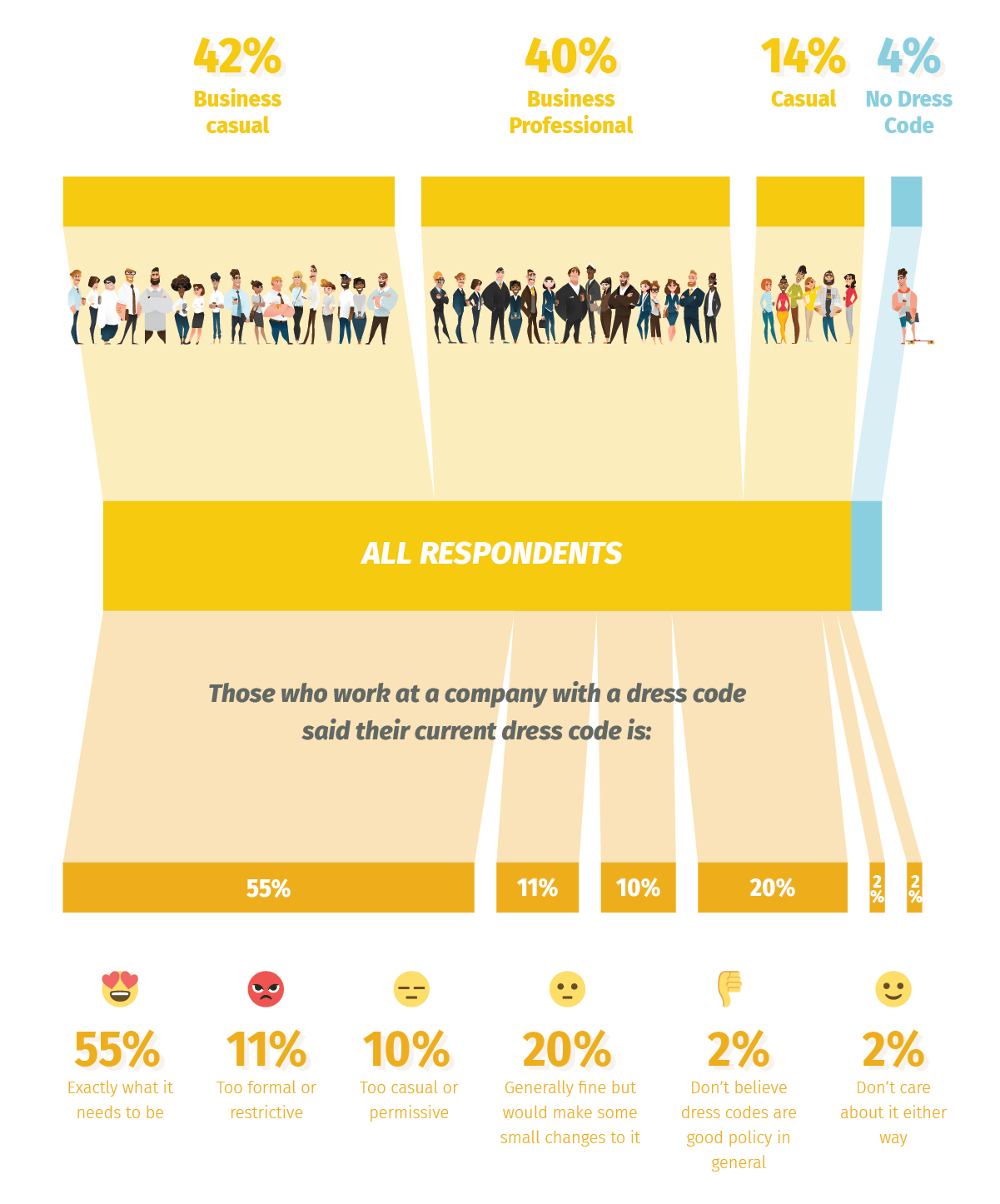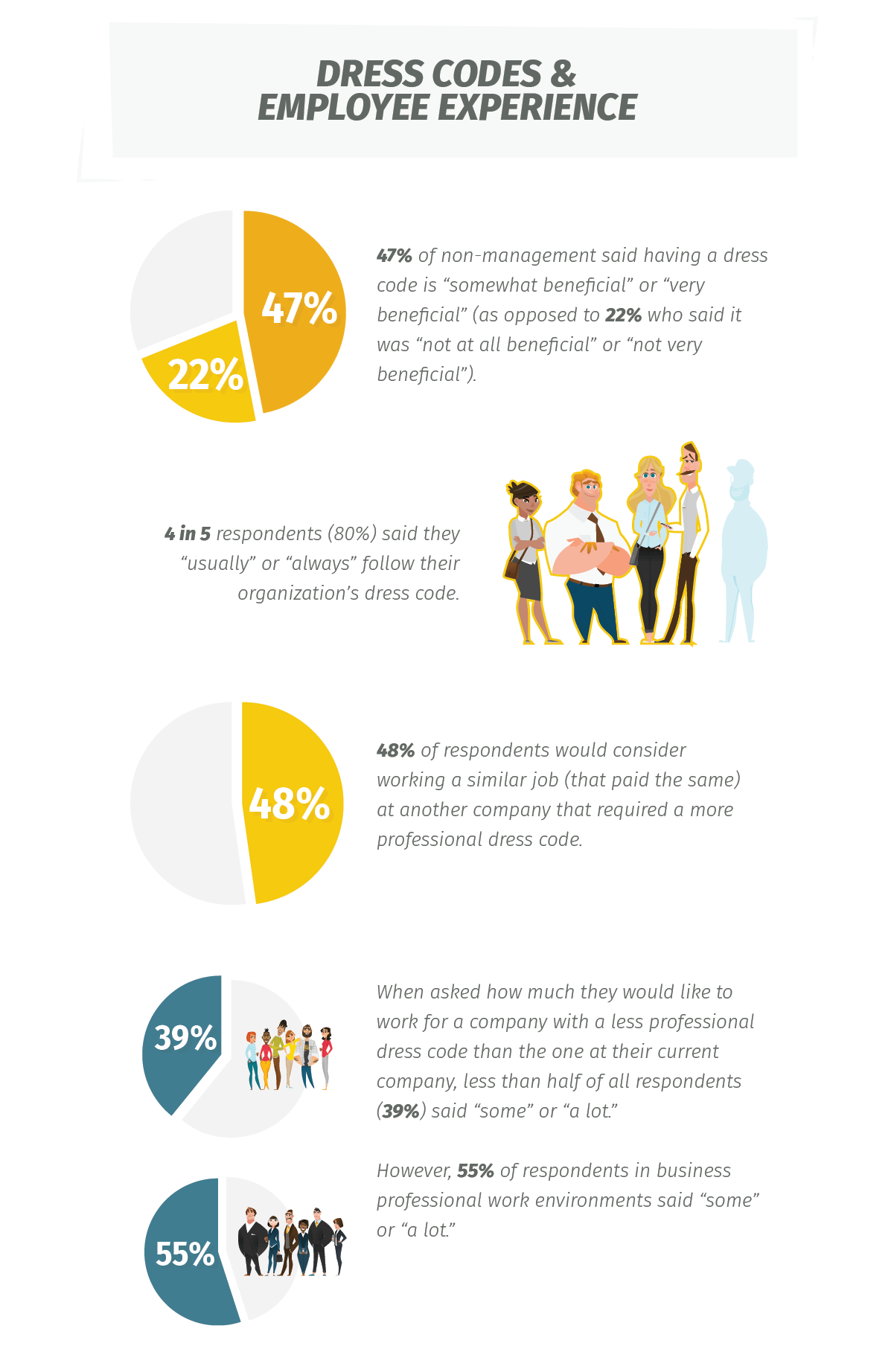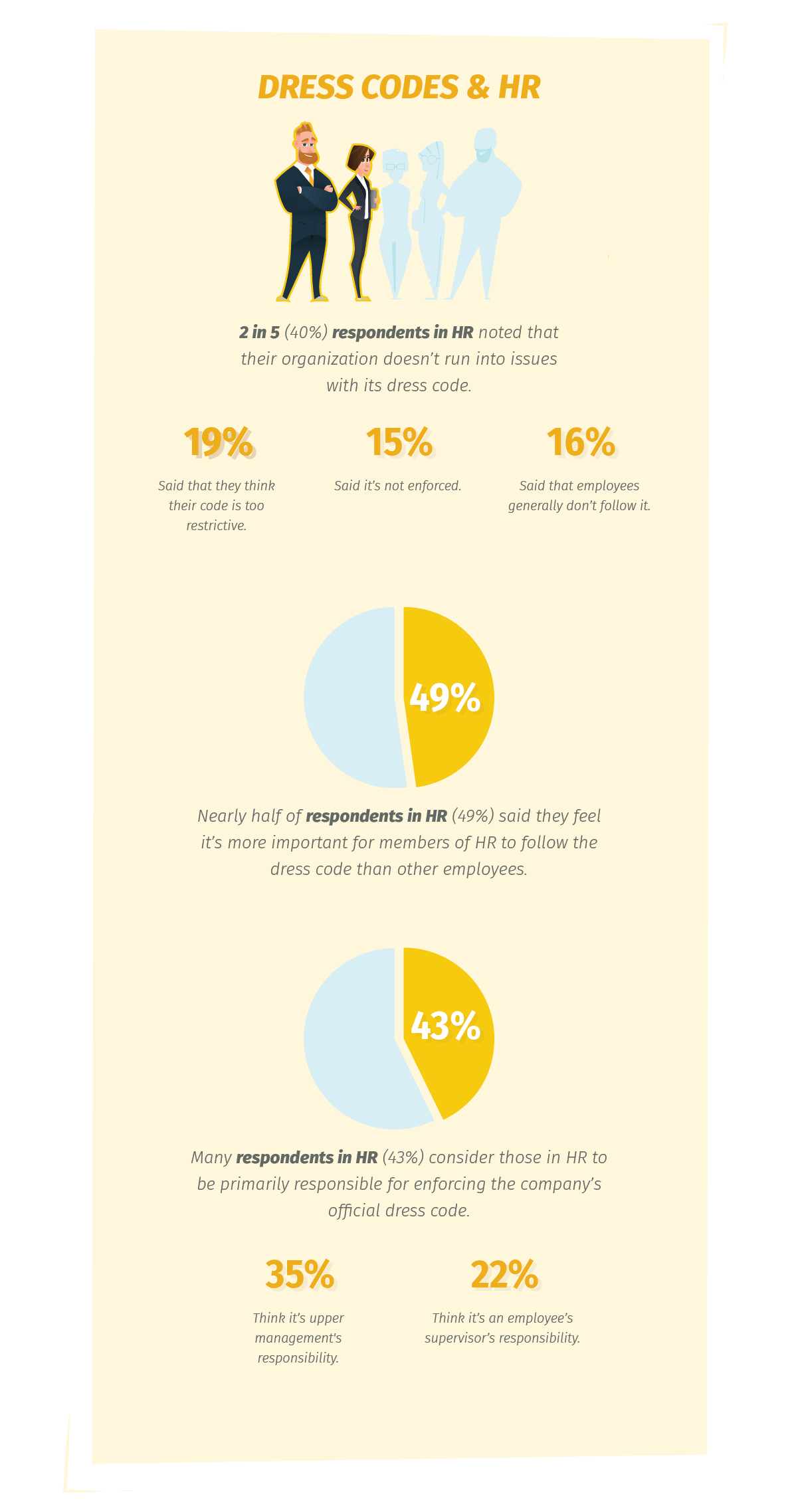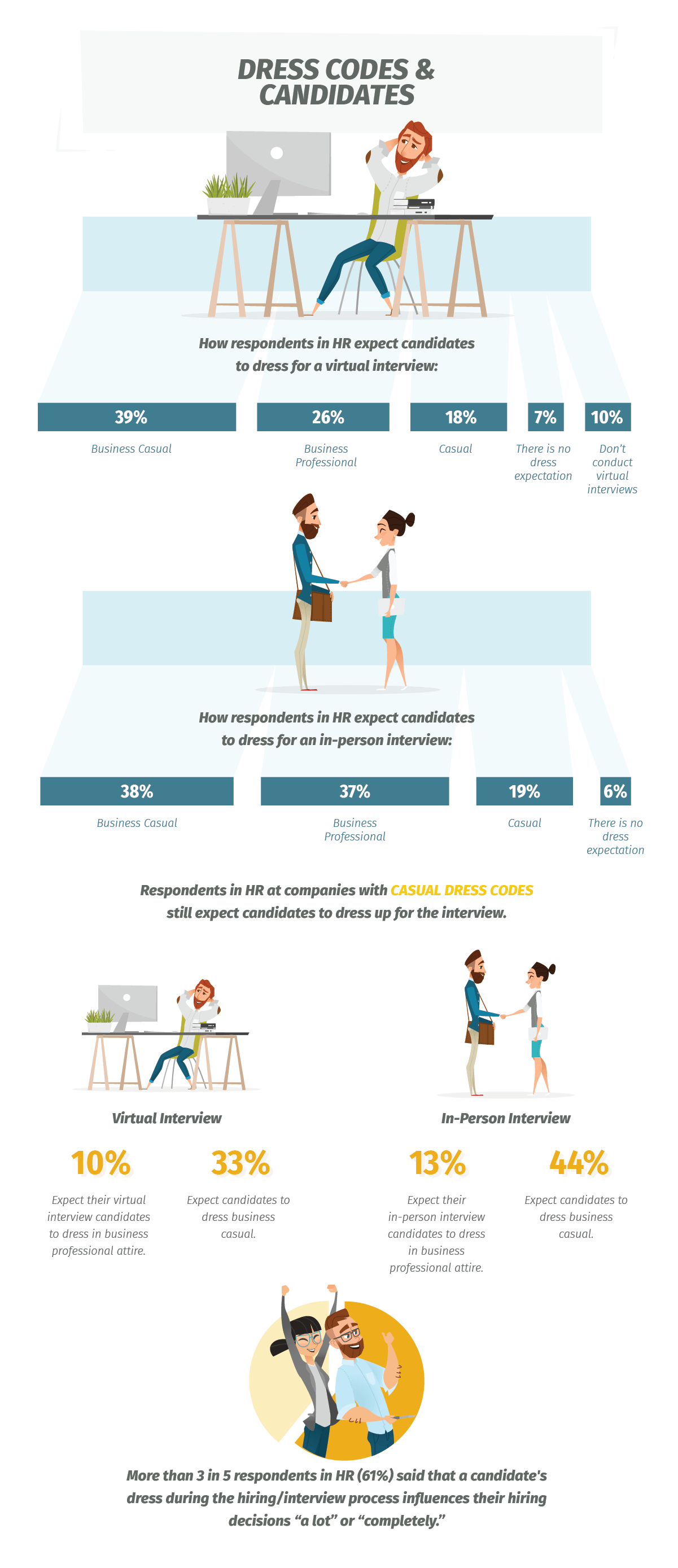Workplace Dress Codes: What Tech Companies Teach Us about Attire and Attitudes [Infographic]
Thanks to shows like HBO’s Silicon Valley (not to mention real-life business leaders like Mark Zuckerberg) portraying hooded sweatshirts and jeans as the standard uniform of the tech industry, it’s become hard to imagine something as stuffy and old-fashioned as a dress code being enforced at your average technology company. Ironic tees and flip-flops set the Hollywood stereotype, with suits and ties nowhere to be seen outside of the boardroom.
But you can’t believe everything you see on T.V.
The reality is that many companies in the technology marketplace do, in fact, have dress codes; not only that but most of their employees actually think dress codes are a positive influence. And if that doesn’t surprise you, the fact that 40 percent of organizations adhere to business professional dress—yep, that means suits and ties—probably will. At least, it surprised us.
We surveyed over 1,000 U.S.-based employees at small-to-medium tech organizations about the prevalence and effects of dress codes in tech—an industry that’s become synonymous with the casual, progressive workplace. The results were compelling, to say the least, which is why we’ve turned them from raw data into an infographic. A big one. Check out some of our findings below, or download the whole thing for yourself.
Types of Dress Codes
As we mentioned earlier, 40 percent of the survey respondents indicated that their organization has a business professional dress code. Another 42 percent said they have a business casual dress code, while only 14 percent (you read that right) have casual dress codes.
Not only does this mean that the vast majority of tech organizations have a formalized dress code, but it also shows that most of these dress codes are business casual or professional. This certainly goes against what many people imagine when they think of the tech world.
It’s also worth noting that 55 percent of respondents believed their dress code is exactly what it needs to be, and only 11 percent indicated theirs is too formal or restrictive. So, while these organizations require more formal dress, many of their employees don’t seem to mind.

Dress Codes and Employee Experience
But what type of dress code is best for the employee experience? First of all, just having any sort of official dress code is probably better than nothing at all: 47 percent of non-management and non-HR respondents report that having a dress code is either “somewhat beneficial” or “very beneficial”—as opposed to 22 percent who think a dress code is not very beneficial.
While you might guess that less formal dress codes are better for employees, that might not always be the case. Less than half of all respondents said they would like to work for an organization with a less formal dress code. However, among respondents from organizations with business professional dress requirements, that number jumps to 55 percent. This could indicate that a business casual dress code may be the sweet spot for many employees.

Dress Codes and HR
Remember the whopping 82 percent of respondents who said their organizations have business casual or professional dress codes? Well, what’s written in a policy may not always be what happens in the workplace. Among our HR respondents, 15 percent indicated their organizations don’t enforce the dress code, and 16 percent said their employees don’t follow the dress code.
What’s interesting about these numbers is that 43 percent of HR respondents also believe it is primarily HR’s responsibility to enforce the dress code (35 percent think that duty belongs to upper management). Yet in quite a few organizations, this enforcement—whoever’s job it is—isn’t happening.

Dress Codes and Candidates
When it comes to dressing for an interview, it seems candidates aren’t off the hook either. Business casual is what many hiring and HR professionals expect, even for virtual interviews (but you can probably get away with slippers if they never see your feet). Candidates coming in for in-person interviews may face a higher expectation than in a virtual interview; just as many HR respondents expect business professional dress in an in-person interview as those who expect business casual in an in-person interview.
And here’s the kicker: some HR professionals in organizations with casual dress codes still expect candidates to dress up for the occasion, at least in business casual attire.

More than an Outfit
We all ask ourselves the same question every morning: What should I wear today? While many of us can answer that question without breaking out a pros and cons list, it’s clear that what we choose to wear—and what we’re told to wear—to work carries more weight than we may realize.
Want to see the rest? Download the full infographic here!
Get caught up every month on all things HR. Don't worry, we promise we won't spam you.
Tori Fica is a copywriter for BambooHR, the leading HR software solution for small and medium businesses. Through research, analysis, and writing, she creates content to help HR professionals think and plan more strategically. Her focus is on taking complex ideas and in-depth research and turning them into clear, digestible pieces of content.












